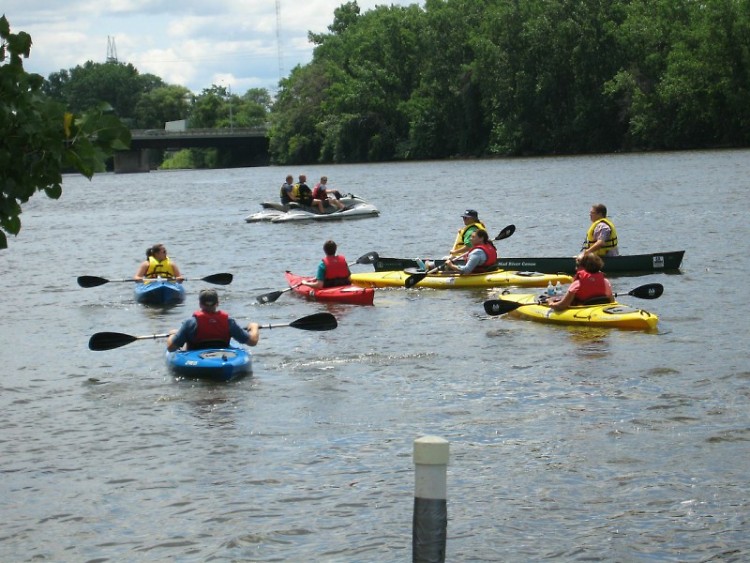I love water. So I guess it’s not a surprise that once I came to Michigan I stayed. Water has been the focus of my work and play for over 20 years, with much of that on the mighty Grand River itself. When I moved to Grand Rapids in the 80’s, my first encounter with the Grand River was hearing that the Raft Race would NOT be happening that year. A raft race? In this river? The river was very quiet after that, just flowing by and not really being noticed by many.
Fast forward to GR Forward, and just look at how much attention it has now. I am fortunate to be a part of the City’s riverfront revitalization project through a few different ways. As a member of GR Forward’s River Corridor Plan Steering Committee, I am working to envision and conceptualize what a healthy, connected and valued river corridor can do for a City. Committee members are asked to check their professional hats at the door and come with a broader view of their river experiences to help shape the future, to think not about what they represent, but who they represent.
This Committee’s work gives the City an opportunity to hear from groups and individuals that could affect or be affected by the project, including our upstream and downstream neighbors. This watershed concept aligns with another of my connections to the project, which is through the Lower Grand River Organization of Watersheds (LGROW).
LGROW was formed to raise awareness of watershed issues, with a mission to “discover and restore all water resources and celebrate our shared water legacy throughout our entire Grand River Watershed community.” We share facts (Did you know that fresh water mussels and clams from the Grand River were once harvested to make buttons?), resources (568 pages of information in the Lower Grand River Watershed Management Plan) and a sense of stewardship toward the river and its watershed (What’s your watershed address?).
But it’s not just about the river. It’s about the people that want to fish in the river, paddle on the river and just watch the river.
The Native Americans who settled along the banks of the Grand River called it O-wash-ta-nong, meaning far-away-water, because of its length of 252 miles from Jackson to Grand Haven and also for the rapids that descended for over a mile, “creating a wild and turbulent sound echoing off the neighboring hills.”
The Grand River Restoration project began with the planning phase of Green Grand Rapids to “activate” the river. When the project became much more than restoring the rapids and developed into a full-scale river restoration effort, we had long lists of people that should be involved in the planning. As the list kept growing and people kept asking to be a part of it, we realized that the river truly does connect us all and we all should have a say in what our river can become.
The public process that the City is leading through the River Corridor Plan Steering Committee will provide many different opportunities for citizens to participate. For example, area students and teachers have realized that the river can be used to promote place-based education. I asked a group of Kent Innovation High School students on their first day of school this year to discover what watershed they live in - where their water comes from and where it goes. As they investigate this watershed concept throughout the year they will learn that the river can only be as healthy as its inputs, which include both its tributaries and our ideas.
The River Corridor Plan Steering Committee now provides an opportunity to make those inputs the cleanest and clearest they can be for the Grand River and the City, which was given its name for a reason.
The Rapidian, a program of the 501(c)3 nonprofit Community Media Center, relies on the community’s support to help cover the cost of training reporters and publishing content.
We need your help.
If each of our readers and content creators who values this community platform help support its creation and maintenance, The Rapidian can continue to educate and facilitate a conversation around issues for years to come.
Please support The Rapidian and make a contribution today.
